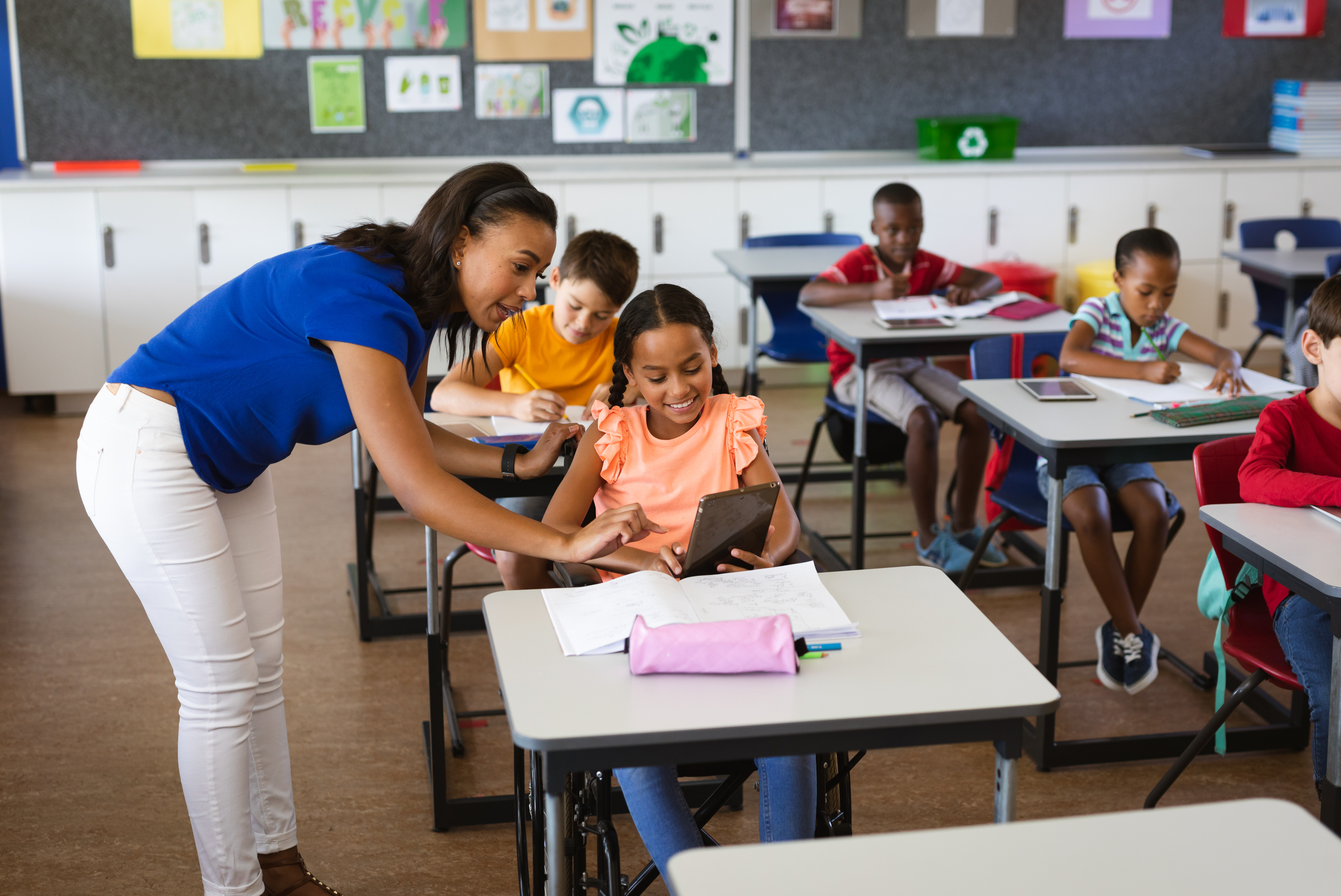Paper vs. Digital Learning
Modernizing classrooms and providing students with the latest and greatest technologies often improves the educational experience. This process had been happening at a gradual pace until the pandemic kicked it into warp speed. The Reach Capital ReimagineED Report on U.S. Education Trends found that in 2020, 26 million devices were shipped into U.S. K-12 schools, the use of Google Classroom increased 375% year-over-year, and Zoom education users made up 50% of subscribers by April. This is because these digital devices and programs made learning from home possible.
Now that we’ve made it to 2022, nearly 100% of U.S. schools have gone back to full-time, in person learning. However, schools are continuing to prioritize digital resources even though some are no longer necessities. Although these digital resources are valuable, this return to the classroom is a perfect time for educators to reincorporate some more classic tools. For example, good old-fashioned books are one of the best sources of information out there to this day. Of course, an eBook will do the trick. But after months of staring at text on screens, many students are craving a more hands-on, physical approach to learning.
Dr. Naomi Baron, a professor of linguistics at American University and a former Guggenheim and Fulbright fellow, published a book titled, Words Onscreen: The Fate of Reading in a Digital World, in which she states that four out of five students prefer reading from print for lengthy texts and 94% of students say they concentrate better when reading in print. Both anecdotes and science suggest that going completely digital would be detrimental to the education system, while keeping some paper and print in curriculums has some serious benefits, like the ones below.
Reading & Writing on Paper Slows Students Down
Students are more likely to skim digital content than to read it carefully since many are in the habit of doing this with extra-curricular materials. Skimming is okay in some school-based situations, like when studying. But when trying to absorb a lesson for the first time, a little more concentration is usually necessary. People usually read physical textbooks at a slower pace, leading to better comprehension.
The same concepts apply to writing as well, especially when it comes to taking notes in class. Since doing this by hand is more time consuming than typing, students are more likely to focus on the key points of a lecture and jot those down specifically. This makes it easier for them to process knowledge into their memory while they are transcribing the words. When taking notes on a computer, students often quickly type out what is being said verbatim without giving the actual concepts much lasting thought. Scientifically speaking, writing by hand involves more senses and motor neurons compared to using keyboards or screens, allowing students to both gain and retain information.
Going Digital Means More Distractions
Flipping a page in a physical book is as simple as it sounds. However, when trying to do schoolwork on most computers, there are an infinite number of distractions just a mere click away. Disruptive experiences abound when reading some online resources. The more you scroll, the more likely you are to see an advertisement. Sometimes an unrelated video will even start playing aloud. Incorporating some paper and ink activities into the school day can help students refocus.
Paper Is Tangible & Engaging
Picking up a publication is an entirely different experience than opening a new tab on your web browser. It engages multiple senses, the most obvious being touch. This is important because 84% of teachers struggled to keep students engaged and motivated during the pandemic, according to the Reach Capital ReimagineED Report. Providing more tactile items for students to interact with is a great way to get them more involved.
Plus, it’s honestly just hard to imagine a paperless elementary school experience. No more childhood art gifted to family members or good grades hanging from the fridge? Some of the most exciting and memorable parts of school require tangible objects beyond a keyboard.
Everyone Needs Screen Breaks
You’re probably aware of how taxing the online world can be. Digital fatigue is real, even for those of us who genuinely enjoy our online time. Burning out on screen usage is now a common occurrence across generations. The average time spent online for kids doubled to over six hours per day during the height of the pandemic, according to the Reach Capital ReimagineED Report. As a society, we’re already constantly using screens for social and entertainment purposes, so now that we’re back to in person learning, going to school is a great opportunity for kids to unplug. This is their chance to socialize with the classmates right in front of them and learn from an expert instead of the misinformation-filled internet. It’s best to use moderation when it comes to screen time, and that logic should apply to all ages in all settings.
There is a time and a place for both digital and more traditional entertainment and learning. One good example outside of the classroom is on the football field, believe it or not. Minnesota Vikings quarterback, Kirk Cousins, prefers to memorize the team’s new playbook by using old school flashcards. He would put the name of a new play or formation on one side, and a drawing on the other, then quiz himself. His success in his career speaks to the effectiveness of this method.
However, younger members of the team, Justin Jefferson and Irv Smith Jr., recently introduced Cousins to the flashcard smartphone app, Quizlet, and guess what… He loves it! It’s ironic that even modern technology is taking its inspiration from classic tactics like flashcards. There are things an app can do that paper can’t though, for example you can more easily study anywhere and it’s likely faster to create the “cards.” Of course, it can also be argued that some learning styles will benefit more from being able to physically write on the cards and flip between them manually. But this is a great example of how the same task can be accomplished on paper or on a device, with pros and cons for both methods, and personal preference playing an important role in deciding which is best for each individual.
Truthfully, there shouldn’t be a competition between paper and digital learning. We’re so lucky to have all these resources at our fingertips and they should work together as a team. Of course, modern technologies should be incorporated into our education system. In fact, without them, schooling during a pandemic would have been near impossible. Plus, students should be familiar and comfortable with technology so that they can enter the world prepared and equipped. At the same time, it’s also important to continue acknowledging the benefits of analog methods.





Leave a Reply